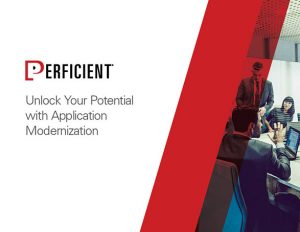As a recent homeowner, I’ve become more attuned to the complexities of the building I live in. After all, the buck now stops with me around repair challenges including piping, the water heater, and the look of the interior.
One thing that stands out to me around home repairs is that everything is standardized and consistent. A trip to the local hardware store confirms this, since there are washers, nuts, bolts, and nails that fit nearly every single type of home and every kind of infrastructure.
Unlock Your Potential with Application Modernization
Application modernization is a growing area of focus for enterprises. If you’re considering this path to cloud adoption, this guide explores considerations for the best approach – cloud native or legacy migration – and more.
Enterprise integration is much the same way, connecting the necessary tools and resources needed to make data flow, connect applications, and simplify operational services. While middleware has served as the critical infrastructure in years past, recent innovations in microservices, containers, and APIs have become chief priorities among forward-looking CIOs.
Much like purchasing new piping or wood panels for a home, the selection of an integration solution also requires deep care. In our work with clients, we’ve discovered 5 essentials for every integration strategy prior to signing on the dotted line. These include:
- Uniform User Experience: User experience is the first thing your customers see and the last feeling they have when interacting with your product. No matter how you try to extend your technology components, having the right product flow makes all the difference.
- Developer Productivity: Building from scratch is fun, but not when you needed to go to market yesterday. Creating an easier way to innovate is helpful for everyone. For example, a drag-and-drop approach to integration flow development and prebuilt connectors and templates to a broader set of integration capabilities.
- API-Centric: Application extensibility is easier than ever, which means you don’t have to develop everything in house anymore. Leveraging APIs for your platform means you can create value without having to hire an entire development team behind you to make it work.
- Connectivity to Legacy Platforms: Finally, legacy middleware might be old, but it’s not quite obsolete yet. Make sure your integration strategy still makes room for older platforms before you completely migrate.
Ultimately, owning your integration strategy means having the right knowledge and understanding of how your systems work. Much like you wouldn’t integrate the wrong piping into your home, you wouldn’t try to integrate APIs and microservices in unnecessary processes too.
Get Started with Integration
With over two decades of experience with IBM integration solutions, we have the right knowledge and skills to help you master your integration strategy. Speak with one of our experts today at sales@perficient.com

